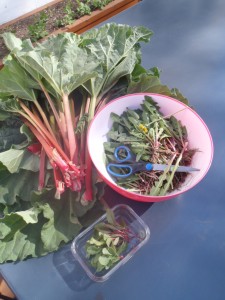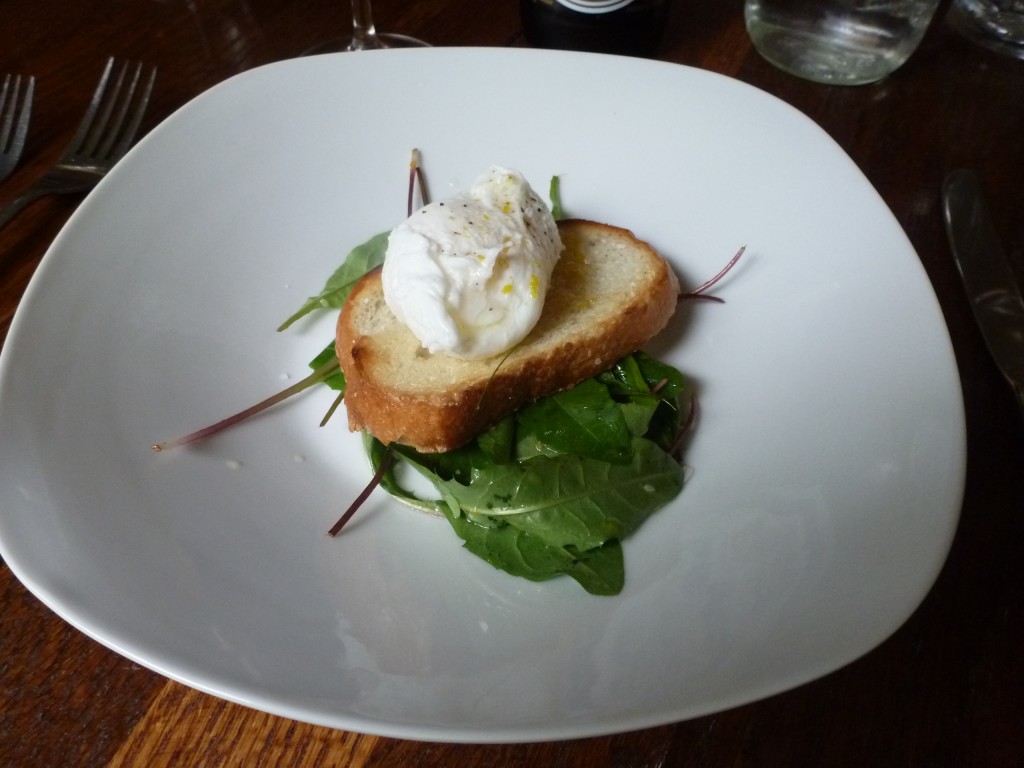 At left is the first harvest from the yard, largely rhubarb and dandelions.
At left is the first harvest from the yard, largely rhubarb and dandelions.
Describing dandelions as “edible” is misleading. The term suggests that they should only be eaten in survival situations. (Would you ever describe spinach, or cheese, or pork, as merely “edible”?)
In reality, dandelions are a treasured leafy green in several European cuisines. They even have an entry in Larousse. Some excerpts from that article:
- “the English name is derived from the alternative French name dent-de-lion (literally ‘lion’s tooth’, referring to its serrated leaves)”
- “Wild dandelion leaves should be picked before the plant has flowered…, when they are small and sweet.” This line confuses me a bit. While our dandelion leaves are definitely better when small and tender, I find that they still have a pronounced (but pleasing) bitterness. I have never tasted a dandelion leaf I would describe as sweet. Perhaps we have a different variety than the Europeans?
- “In salads, dandelions are traditionally accompanied by diced bacon and garlic-flavoured croutons…, hard-boiled eggs or walnuts.”
I love dandelions because they are one of the first weeds to pop up after the snow melts. The bacon-dandelion salad mentioned in Larousse has become a cherished springtime lunch in my kitchen.
You can also give the roots and flowers a go. The roots have the same bitterness as the leaves, obviously with an added crunch. The flowers are very fun to eat. They have a slight sweetness.
Instead of the classic hard-boiled egg I like to use a soft-poached egg. When broken, the fatty yolk runs through the leaves and tempers their bitterness. The dressing is usually made with cider vinegar, a touch of mustard, a touch of bacon fat, and canola oil.
This salad goes well with Weissbier.

In addition to enjoying them fresh in salad, I like chopping them up and throwing them in with braised lentils and sausage near the end of cooking. Makes a nice alternative to kale or spinach.
Martin, that sounds fantastic. Can't wait to try it (I assume you are cooking it for me…)